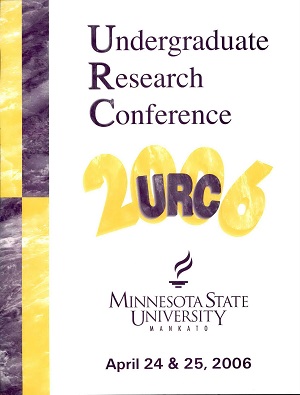Effects of Thermal Boundary Conditions During Finite Element Modeling of Physical Vapor Transport
Location
CSU 284
Start Date
24-4-2006 1:30 PM
End Date
24-4-2006 3:00 PM
Student's Major
Mechanical and Civil Engineering
Student's College
Science, Engineering and Technology
Mentor's Name
Patrick Tebbe
Mentor's Department
Mechanical and Civil Engineering
Mentor's College
Science, Engineering and Technology
Description
Physical vapor transport (PVT) is a material processing method commonly used to produce different types of semiconductor materials. Computer modeling of PVT is important to understand the fundamentals of the processing method. Due to the large amount of computer processing power and storage needed to solve the computer models many of the previously solved simulations have been simplified to efficiently utilize computer usage. Previous PVT computer simulations of mercurous chloride (Hg2Cy have assumed constant temperature profiles on the source and crystal substrate for simplicity. These simulations were performed using the FIDAP computational fluid dynamics software package. In this research the system boundary conditions for the previously solved mercurous chloride models were modified using the FIDAP software package to more accurately represent an actual PVT system. The results were then compared to the previously solved simplified cases and the boundary condition affects were examined. These results are important for the crystal growth and semiconductor community in improving future processes and product quality.
Effects of Thermal Boundary Conditions During Finite Element Modeling of Physical Vapor Transport
CSU 284
Physical vapor transport (PVT) is a material processing method commonly used to produce different types of semiconductor materials. Computer modeling of PVT is important to understand the fundamentals of the processing method. Due to the large amount of computer processing power and storage needed to solve the computer models many of the previously solved simulations have been simplified to efficiently utilize computer usage. Previous PVT computer simulations of mercurous chloride (Hg2Cy have assumed constant temperature profiles on the source and crystal substrate for simplicity. These simulations were performed using the FIDAP computational fluid dynamics software package. In this research the system boundary conditions for the previously solved mercurous chloride models were modified using the FIDAP software package to more accurately represent an actual PVT system. The results were then compared to the previously solved simplified cases and the boundary condition affects were examined. These results are important for the crystal growth and semiconductor community in improving future processes and product quality.
Recommended Citation
Luhman, Wade. "Effects of Thermal Boundary Conditions During Finite Element Modeling of Physical Vapor Transport." Undergraduate Research Symposium, Mankato, MN, April 24, 2006.
https://cornerstone.lib.mnsu.edu/urs/2006/oral-session-E/5



